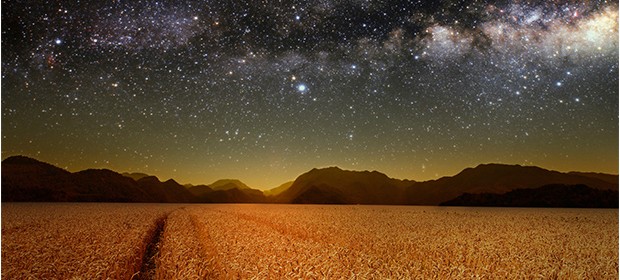Fall evenings offer an excellent opportunity of determining just how good your sky viewing conditions are using one of its best-known asterisms or star groupings. And this requires nothing more than the unaided eye and a clear dark night.
As we’ve previously discussed in this column, each of the seasons has a characteristic geometric sky pattern associated with it. These are the Winter Circle, Spring Diamond, Summer Triangle, and finally the Fall or Great Square. The Square (actually more of a big rectangle) is sitting directly on the meridian high in the south on early November evenings. Set your Scientifics Star and Planet Locator for around 8 p.m. local time to identify it.
The number of star visible to the unaided eye within the Square has long been used by stargazers as an indicator of how dark the sky is (its “transparency”). At first glance, its interior looks devoid of stars. But a more careful look will show that it’s not empty. The brightest star within its boundaries is magnitude 4.4, easily visible on a dark night under good conditions (see below). It’s closely followed by four of 5.0 magnitude. At magnitude 5.5, seven stars are visible and 13 can be seen at 6.0 magnitude. Under pristine skies (magnitude 6.5), fully 30 have been counted by keen-eyed observers!
In testing the naked-eye limiting magnitude (or NELM as it’s referred to), it’s first important to be shielded as much as possible from artificial sources of light pollution such as house, porch, street and car lights. The major source of natural light pollution is the Moon itself. It’s best to do your test when it’s not visible at all—or at least not in the evening sky. New Moon occurs on the 29th this month and for at least a week or so before this it shouldn’t interfere with early evening observations. Another must is “dark-adapting” your eyes for at least 15 minutes in a totally dark room before (carefully!) venturing outside. And another important technique is that of “averted vision.” This involves looking to the side of rather directly at faint objects to make them appear brighter.
So once you’ve counted the number of stars visible and compare that to the corresponding magnitude limit, what does this mean? If you can only see one star within the Square, your sky is not really dark at all as is typical of urban areas in or near cities. If four are visible you are probably living in the suburbs and have relatively dark skies. Seven brings us to about the best sky conditions as can be expected today without having to go to the mountains or a national park. This is dark enough to glimpse faint deep-sky wonder like galaxies with binoculars and small telescopes. If you can count 13 stars within the Square, congratulations! At magnitude 6.0, you have truly dark skies by today’s standards—ones that are only excelled at major mountaintop observatories.
— James Mullaney
Former assistant editor at Sky & Telescope magazine & author of nine books on stargazing. His latest, Celebrating the Universe!, is available from HayHouse.com.


